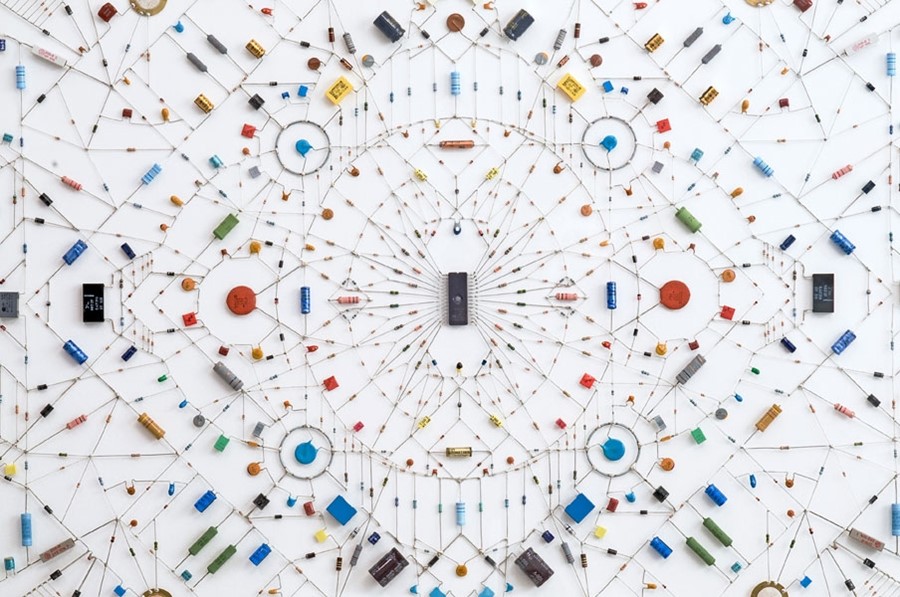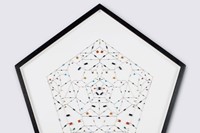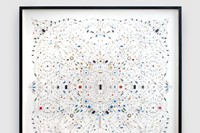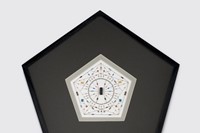Italian-born, London-based artist Leonardo Ulian finds much of his inspiration in everyday objects, his imaginative practice often centred on their reinterpretation. His newest series, Technological Mandalas, is a brilliant example of this...
Italian-born, London-based artist Leonardo Ulian finds much of his inspiration in everyday objects, his imaginative practice often centred on their reinterpretation. His newest series, Technological Mandalas, is a brilliant example of this, offering a contemporary take on the mandala, a spiritual artwork used predominantly in Hinduism and Bhuddism as a meditative aid. Ulian uses tiny computer comoponents, arranged with exquisite attention to symmetry and colour, to create giant mandala-shaped circuits comprised mainly of circles and squares.
Perhaps unsurprisingly, Ulian undertook a diploma in micro-electronics before training as a graphic designer and later completing a Fine Art degree. On the build up to his artistic career and practice, Ulian explains, "since I was really young, I've always known I wanted to create things. I was curious to know how things worked, and I was pleased to reinvent the objects of my curiosity. Obviously, the resulting objects were a kind of grotesque reproduction of the real subjects, but from those childish experiences, I later realised that artefacts can be seen as many distorted mirrors of the everyday, a caricature of the real." Here, we talk to him about the creation of the mandalas, spiritualism and the best advice he's ever been given...
Can you explain the thought process behind your technological mandalas?
With the Mandalas series I am showing what has been hidden from the eyes of the consumer, representing technology and in particular electronic circuits as extraordinary objects where the perfection of the design can become almost something ethereal. In reality my Technological Mandalas do not work as traditional electronics circuits, but I see them as ephemeral gizmos able to trigger the eyes and minds of the viewers with thoughts and images of any kind.
"I see my Technological Mandalas as ephemeral gizmos able to trigger the eyes and minds of the viewers"
Apart from mandalas, did you have any other key reference points/influences when creating the series?
I like geometry, I am also studying mazes and labyrinths and sacred geometry.
How long did they take you to make on average?
It depends on the size end complexity of the piece. The Technological Madala 02 – one of the biggest I made – took me about twenty days to complete, between designing and making.
Mandalas are most often associated with Hinduism and Bhuddism, are you yourself spiritual?
I do not like to be polarized on a specific belief. I think I am in a state of seeking who we are and where we going, but without embracing a specific belief. This gives me the freedom to explore different theories and paths.
What is your favourite piece of technology to date?
I am not going far from my field: microchips. There is everything in them, they are symbols of contemporaneity.
What makes a good sculpture?
An artifact or sculpture has to possess, above all, a high degree of play value, which is what defines, for me, the capacity of an art object to stimulate and engage the viewer.
What inspires your practice?
I am inspired by what I see around me – not just by objects or things but also by the behaviour of people, the way we live and the systems we unconsciously like to create to make our existence more comfortable.
What is your dream project?
I would like to make an art piece out of a silo. There are a lot of silos around the area I used to live in Italy, they are used for storing sawdust produced by furniture factories. Since I was a kid, I have always thought that silos are fascinating constructions. In my childish vision I remember them as giant robots who had come from a different planet.
What is the best advice you’ve ever been given?
Do not follow others, make your own mistakes.
Text by Daisy Woodward



